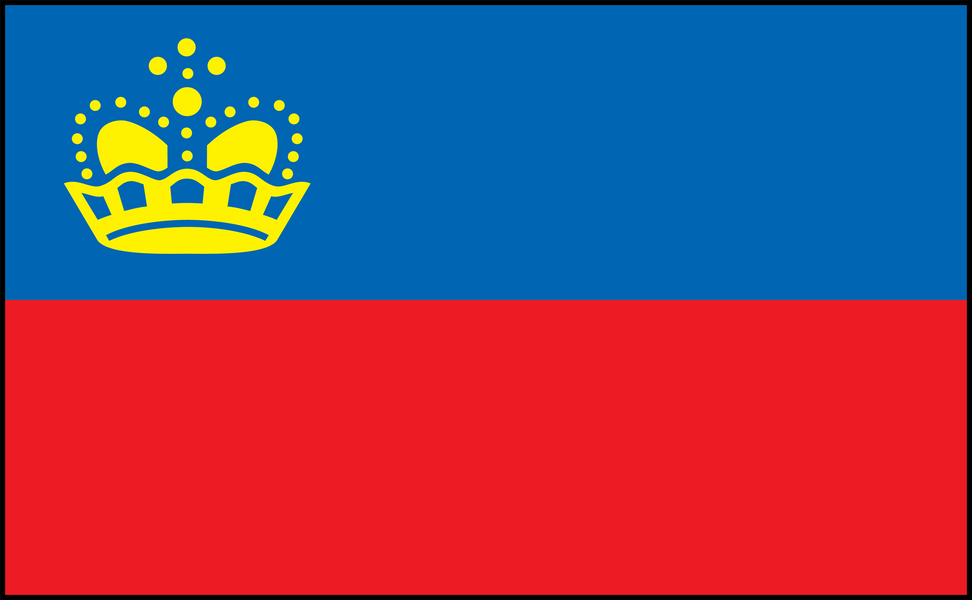Interesting Liechtenstein Facts
Liechtenstein is a landlocked country located in Western Europe where it is bordered by Austria and Switzerland. It spreads across 160 km2 of land. The estimated total population of Liechtenstein is thought to be more than 37,922.
Find out interesting Liechtenstein facts and information about this European country with our fact file for kids. Explore important facts about the climate, currency, flag, continent, geography, landscape, language, people, culture, landmarks, population, location and size of Liechtenstein.
Learn about Europe with our interesting Liechtenstein facts for kids based on questions such as: What continent is Liechtenstein in? What is the climate like in Liechtenstein? What color is the flag of Liechtenstein? What is the capital city of Liechtenstein? What are the major cities of Liechtenstein?
Liechtenstein Fact File: Continent: Europe * Country Name(s): Liechtenstein, Principality of Liechtenstein * Location: Western Europe * Bordering: Austria and Switzerland * Capital City: Vaduz * Size: 160 km2 * Estimated Population: over 37,922 * Currency: Swiss franc (CHF) * Language(s): German * Country Code: +423
Interesting Liechtenstein Facts for Kids
Interesting Facts for Kids 1: Size & location facts
Liechtenstein forms part of the continent of Europe, where it has a landlocked position and is bordered by Austria and Switzerland. There are seven continents in the world: Asia, Africa, North America, South America, Europe, Antarctica, Australia (Oceania). Europe is the world's second smallest continent, spanning a total area of 10,180,000 km2. Europe has 51 countries, with some countries belonging to both Europe and Asia, and forms 6.8% of the world's landmass. Liechtenstein is a landlocked country that occupies a total area of approximately 160 km2. It is one of the smallest countries in Europe and the rest of the world, and one of the only countries that is double landlocked (landlocked by a landlocked country).
Interesting Facts for Kids 2: Population facts
The population of this European country is over 37,922 people. The majority of Liechtenstein's inhabitants reside in Schaan which is the country's most populous city. Liechtenstein has a very low population when compared to other countries across the world, its overall population density is approximately 226 people per sq km. The estimated population of Europe is approximately 738,442,000 inhabitants, making it the continent with the second smallest population in the world. The continents in order of population, starting with highest population first, are: Asia, Africa, North America, South America, Europe, Australia (Oceania Region) and Antarctica. The total population of the entire world is in excess of 7.6 billion people.
Interesting Facts for Kids 3: Capital & major cities
Liechtenstein's capital city is called Vaduz. The names of other major cities situated in this country are Schaan, Triesen, Balzers, Eschen and Mauren.
Interesting Facts for Kids 4: Country borders
The following guideline provides details on the approximate border lengths of Liechtenstein:
Austria 34 km, Switzerland 41 km.
Interesting Facts for Kids 5: Climate and geography facts
Liechtenstein experiences a continental climate that is characterized by overcast, rainy and snowy winters with cold temperatures, and humid, overcast summers with warm temperatures. The geography of Liechtenstein comprises majorly of mountainous regions, namely the Alps mountain range. The Rhine Valley occurs in the west. The lowest point of Liechtenstein is the Ruggeller Riet at 430m, and the highest point of elevation is Vorder-Grauspitz at 2,599m.
Interesting Facts for Kids 6: Natural Resources of Liechtenstein
Natural resources can be described as materials and substances found naturally occurring on Earth. Natural resources are very important across the world, and can be exploited for economic gain. The level of natural resources present in an individual country depends on varying factors which are influenced by the geography, climate and location of that country. Some countries, such as Russia, The United States, Saudi Arabia and Canada, have many natural resources, where as some other countries have limited to none. Three of the primary uses of natural resources are food, transport and construction. The following examples provide information on the everyday uses of natural resources: Fish occurs naturally in many bodies of water and can be caught for food consumption. Crude oils can be refined into various fuels in order to power vehicles/cars. Wood/timber can be extracted from forests and used to construct houses and furniture. The natural resources of Liechtenstein include hydroelectric potential, and arable land suitable for growing crops.
Interesting Facts for Kids 7: Language facts
The official language of Liechtenstein is German, with the main dialect being Alemannic. Another language that is used by a very small percentage in this country is Italian.
Interesting Facts for Kids 8: Religion facts
The main religion of Liechtenstein is Roman Catholic at approximately 75% of the population. Around 6% are Protestant Reformed and 5% Muslim. The rest of the population either belongs to other religions or no religion at all.
Interesting Facts for Kids 9: Symbols of Liechtenstein
Each country has its own individual culture, history and identity. Flags, emblems, symbols, mottos, colors, anthems and songs represent the national pride and identity of countries worldwide. These national symbols are created through the unique history of a nation and can portray both hardship and prosperity, embodying freedom, strength and unity. Flags, emblems, songs, mottos and colors reflect the past, present and future hopes of a country, and create an important image to the rest of the world. National symbols can represent a combination of things that are important to a country such as birds, animals, plants, geographical features, tools of agriculture, crops, and tools of war. The following facts depict some of the national symbols, songs and colors that are important to Liechtenstein:
National symbol(s): princely hat (crown)
National colors: blue and red
National Anthem/Song: Oben am jungen Rhein (Translation: High Above the Young Rhine)
National Holiday(s): National Day, 15 August (1940)
National Motto(s): Für Gott, Fürst und Vaterland (Translation: For God, Prince and Fatherland)
